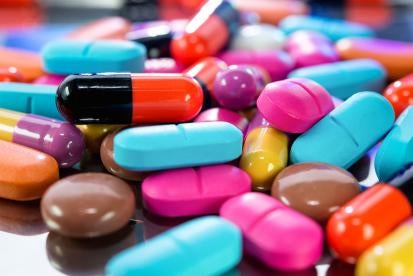The 21st Century Cures Act (the “Cures Act”) requires FDA to develop a framework and guidance for evaluating real world evidence (“RWE”) in the context of drug regulation to support approvals of new indications for previously approved drugs, and to support or fulfill post-approval study requirements. This directive to apply RWE in the drug sphere is particularly interesting because FDA has issued a draft policy on the use of RWE in the context of medical devices, but has generally remained silent about applying RWE to pharmaceutical and biologic regulatory considerations. In this post, we briefly review the Cures Act’s RWE provision, as well as FDA’s recent public remarks about the use of RWE, and we provide some predictions on how FDA will implement the RWE evaluation program.
The Cures Act’s RWE Provision
All requirements related to RWE appear in section 3022 of the Cures Act, which creates Section 505f of the Federal Food, Drug, and Cosmetic Act (the “FD&C Act”), or 21 U.S.C. § 355f. For the purposes of the Cures Act, “real world evidence” is defined as “data regarding the usage, or the potential benefits or risks, of a drug derived from sources other than randomized clinical trials.” The new provisions require FDA to establish a program to evaluate RWE for the following purposes:
-
To help to support the approval of a new indication for a drug approved under section 505(c); and
-
To help to support or satisfy post-approval study requirements.
FDA must establish a framework for the RWE program, which must be developed in collaboration with relevant stakeholders in the drug industry, and implement that framework within two years after the enactment date of the Cures Act. In addition, within five years of the enactment date, FDA must issue draft guidance describing (1) “the circumstances under which sponsors of drugs may rely” on RWE, and (2) acceptable standards and methodologies for collecting and analyzing RWE.
This provision explicitly states that the new RWE requirements stated in the Cures Act do not limit FDA’s use of RWE for other purposes and do not change the standards of evidence required under sections 505(c) and (d) of the FD&C Act or section 351(a) of the Public Health Service Act.
FDA’s Proposals on RWE Evaluation for Medical Devices
FDA has included a proposal in the MDUFA IV negotiations to add fifteen full-time employees to a coordinating center who will work on implementing the use of RWE in premarket decision-making. The NEST program incorporates RWE into its data collection and analysis framework.
In July 2016, FDA released a draft guidance entitled Use of Real-World Evidence to Support Regulatory Decision-Making for Medical Devices (the “Device RWE Draft Guidance”), which explains FDA’s current thinking on possible, acceptable uses for RWE in the established medical device regulatory scheme. For comparison, the Device RWE Draft Guidance defines two terms that are essentially equivalent to the singular RWE definition in the Cures Act:
-
Real-World Data (RWD) – “Data collected from sources outside of traditional clinical trials”
-
Real-World Evidence (RWE) – “Evidence derived from aggregation and analysis of RWD elements”
FDA lists many potential sources of device RWD, including “large simple trials, or pragmatic clinical trials, prospective observational or registry studies, retrospective database studies, case reports, administrative and healthcare claims, electronic health records, data obtained as part of a public health investigation or routine public health surveillance, and registries,” and states that data from these sources, if appropriately validated, can provide valuable insight into the performance of medical devices used in actual clinical settings and in routine medical practice.
To ensure that RWE is suitable for evaluation in a regulatory context, FDA explained that it would apply threshold criteria to determine whether the RWE collected is (1) sufficiently relevant to the applicable regulatory question or requirement and (2) reliable enough to satisfy that regulatory question or requirement. By necessity, these criteria can only be evaluated on a case-by-case basis and entail significant Agency discretion.
FDA’s Article in The New England Journal of Medicine
On December 8th, FDA Commissioner Robert Califf, along with the Directors of relevant Centers and Offices, published a commentary on RWE in The New England Journal of Medicine titled Real-World Evidence—What Is It and What Can It Tell Us? The article sets forth a general theory of RWE and its potential uses that closely parallels the Device RWE Draft Guidance.
First, the article gives a definition of RWE that is equivalent to the Cures Act and the Device RWE Draft Guidance: “information on health care that is derived from multiple sources outside typical clinical research settings, including [EHR], claims and billing data, product and disease registries, and data gathered through personal devices and health applications.” Second, FDA identifies that, unlike clinical trials which impose strict eligibility criteria and controlled procedures, RWE can provide useful data about actual use in a clinical setting. However, FDA emphasizes in the article that clinical trial methodologies, such as randomization and planned intervention, are not inconsistent with methods for collection and analysis of RWE. Third, FDA repeats the warning that many RWE sources are not organized or optimized for supporting research or regulatory assessments. Finally, FDA’s stated priority in developing an RWE framework is to make the best use of relevant RWE that are generated through reliable methods that limit the effect of bias and confounding factors as much as possible.
FDA also uses the article to differentiate the use of RWE in drug and device contexts by stating that since medical devices are developed in an iterative fashion, RWE is generated throughout the life-cycle of a device and relevant confounding factors are typically recognized and compensated for in the data analysis. However, in the context of accelerated approval of precision molecular treatments, RWE to confirm clinical benefit will need to be generated quickly and reliably to support the regulatory approval process.
The Future of RWE at FDA
While FDA has historically clung to the controlled, randomized clinical trial as the gold standard for generating data to support all regulatory determinations, the Agency recently acknowledged that RWE meeting certain criteria could be used to support some regulatory decisions, at least in the medical device sphere. Now, the Cures Act requires that FDA meet an accelerated timeline for developing a regulatory framework for RWE that applies to drug applications, as well.
Comparing the Device RWE Draft Guidance and FDA’s NEMJ commentary reveal remarkable (and yet not so remarkable) similarities in the Agency’s thinking on the use of RWE in both the device and drug regulatory schemes, as described above. Given the parallels in FDA’s comments on controlling device and drug RWE, we expect that the RWE evaluation program framework required by the Cures Act will be based largely on the Device RWE Draft Guidance, applying similar criteria of relevant and reliability to RWE collection and analysis methodologies for drug products. Although the clinical use contexts of drugs differ greatly from those of devices, the real-world data sources for both drug and device use are essentially equivalent and the criteria FDA can impose upon collection and analytical methodologies (e.g., accounting for confounding factors, establishing consistent definitions, and controlling data capture) can be applied to all sources and RWE study types. However, since the Device RWE Draft Guidance was only released five months ago, there is little feedback from stakeholders and Agency officials about the effectiveness of the criteria described in the guidance and FDA has little experience applying the use of RWE in regulatory processes.





 i
i

